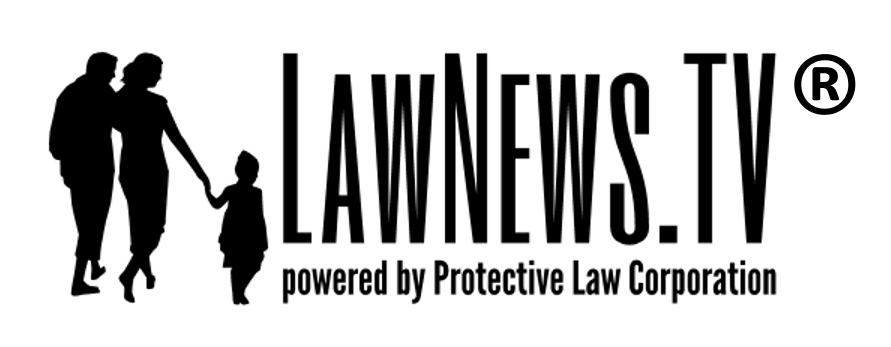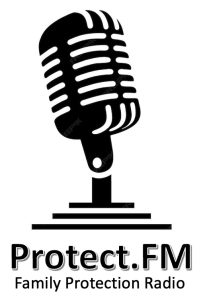In the case of Kennedy v Bremerton School District (slip opinion), SCOTUS today ruled in favor of a high school football coach who was terminated for kneeling and praying mid-game on school grounds, in violation of his First Amendment rights to free speech and to free exercise of religion. The School claimed it terminated the coach out of fear of liability under the Establishment Clause, under the Lemon Test. The Court stated that it had long ago abandoned the Lemon Test, a balancing test for violations of the Establishment Clause, in favor of strict srutiny with a text/history analysis which also extends to Free Exercise and Free Speech.
Here is the syllabus:
SUPREME COURT OF THE UNITED STATES
Syllabus
KENNEDY v. BREMERTON SCHOOL DISTRICT
CERTIORARI TO THE UNITED STATES COURT OF APPEALS FOR
THE NINTH CIRCUIT
No. 21–418. Argued April 25, 2022—Decided June 27, 2022
Petitioner Joseph Kennedy lost his job as a high school football coach in
the Bremerton School District after he knelt at midfield after games to
offer a quiet personal prayer. Mr. Kennedy sued in federal court, alleging that the District’s actions violated the First Amendment’s Free
Speech and Free Exercise Clauses. He also moved for a preliminary
injunction requiring the District to reinstate him. The District Court
denied that motion, and the Ninth Circuit affirmed. After the parties
engaged in discovery, they filed cross-motions for summary judgment.
The District Court found that the “‘sole reason’” for the District’s decision to suspend Mr. Kennedy was its perceived “risk of constitutional
liability” under the Establishment Clause for his “religious conduct”
after three games in October 2015. 443 F. Supp. 3d 1223, 1231. The
District Court granted summary judgment to the District and the
Ninth Circuit affirmed. The Ninth Circuit denied a petition to rehear
the case en banc over the dissents of 11 judges. 4 F. 4th 910, 911.
Several dissenters argued that the panel applied a flawed understanding of the Establishment Clause reflected in Lemon v. Kurtzman, 403
U. S. 602, and that this Court has abandoned Lemon’s “ahistorical,
atextual” approach to discerning Establishment Clause violations. 4
F. 4th, at 911, and n. 3.
Held: The Free Exercise and Free Speech Clauses of the First Amendment protect an individual engaging in a personal religious observance
from government reprisal; the Constitution neither mandates nor permits the government to suppress such religious expression. Pp. 11–32.
(a) Mr. Kennedy contends that the District’s conduct violated both
the Free Exercise and Free Speech Clauses of the First Amendment.
Where the Free Exercise Clause protects religious exercises, the Free
Speech Clause provides overlapping protection for expressive religious
2 KENNEDY v. BREMERTON SCHOOL DIST.
Syllabus
activities. See, e.g., Widmar v. Vincent, 454 U. S. 263, 269, n. 6. A
plaintiff must demonstrate an infringement of his rights under the
Free Exercise and Free Speech Clauses. If the plaintiff carries his or
her burden, the defendant must show that its actions were nonetheless
justified and appropriately tailored. Pp. 11–30.
(1) Mr. Kennedy discharged his burden under the Free Exercise
Clause. The Court’s precedents permit a plaintiff to demonstrate a
free exercise violation multiple ways, including by showing that a government entity has burdened his sincere religious practice pursuant to
a policy that is not “neutral” or “generally applicable.” Employment
Div., Dept. of Human Resources of Ore. v. Smith, 494 U. S. 872, 879–
881. Failing either the neutrality or general applicability test is sufficient to trigger strict scrutiny, under which the government must
demonstrate its course was justified by a compelling state interest and
was narrowly tailored in pursuit of that interest. See, e.g., Church of
Lukumi Babalu Aye, Inc. v. Hialeah, 508 U. S. 520, 546.
Here, no one questions that Mr. Kennedy seeks to engage in a sincerely motivated religious exercise involving giving “thanks through
prayer” briefly “on the playing field” at the conclusion of each game he
coaches. App. 168, 171. The contested exercise here does not involve
leading prayers with the team; the District disciplined Mr. Kennedy
only for his decision to persist in praying quietly without his students
after three games in October 2015. In forbidding Mr. Kennedy’s brief
prayer, the District’s challenged policies were neither neutral nor generally applicable. By its own admission, the District sought to restrict
Mr. Kennedy’s actions at least in part because of their religious character. Prohibiting a religious practice was thus the District’s unquestioned “object.” The District explained that it could not allow an onduty employee to engage in religious conduct even though it allowed
other on-duty employees to engage in personal secular conduct. The
District’s performance evaluation after the 2015 football season also
advised against rehiring Mr. Kennedy on the ground that he failed to
supervise student-athletes after games, but any sort of postgame supervisory requirement was not applied in an evenhanded way.
Pp. 12–14. The District thus conceded that its policies were neither
neutral nor generally applicable.
(2) Mr. Kennedy also discharged his burden under the Free
Speech Clause. The First Amendment’s protections extend to “teachers and students,” neither of whom “shed their constitutional rights to
freedom of speech or expression at the schoolhouse gate.” Tinker v.
Des Moines Independent Community School Dist., 393 U. S. 503, 506.
But teachers and coaches are also government employees paid in part
to speak on the government’s behalf and to convey its intended mes-
Cite as: 597 U. S. ____ (2022) 3
Syllabus
sages. To account for the complexity associated with the interplay between free speech rights and government employment, this Court’s decisions in Pickering v. Board of Ed. of Township High School Dist. 205,
Will Cty., 391 U. S. 563, and Garcetti v. Ceballos, 547 U. S. 410, and
related cases suggest proceeding in two steps. The first step involves
a threshold inquiry into the nature of the speech at issue. When an
employee “speaks as a citizen addressing a matter of public concern,”
the Court’s cases indicate that the First Amendment may be implicated and courts should proceed to a second step. Id., at 423. At this
step, courts should engage in “a delicate balancing of the competing
interests surrounding the speech and its consequences.” Ibid. At the
first step of the Pickering–Garcetti inquiry, the parties’ disagreement
centers on one question: Did Mr. Kennedy offer his prayers in his capacity as a private citizen, or did they amount to government speech
attributable to the District?
When Mr. Kennedy uttered the three prayers that resulted in his
suspension, he was not engaged in speech “ordinarily within the scope”
of his duties as a coach. Lane v. Franks, 573 U. S. 228, 240. He did
not speak pursuant to government policy and was not seeking to convey a government-created message. He was not instructing players,
discussing strategy, encouraging better on-field performance, or engaged in any other speech the District paid him to produce as a coach.
Simply put: Mr. Kennedy’s prayers did not “ow[e their] existence” to
Mr. Kennedy’s responsibilities as a public employee. Garcetti, 547
U. S., at 421. The timing and circumstances of Mr. Kennedy’s prayers—during the postgame period when coaches were free to attend
briefly to personal matters and students were engaged in other activities—confirms that Mr. Kennedy did not offer his prayers while acting
within the scope of his duties as a coach. It is not dispositive that
Coach Kennedy served as a role model and remained on duty after
games. To hold otherwise is to posit an “excessively broad job descriptio[n]” by treating everything teachers and coaches say in the workplace as government speech subject to government control. Garcetti,
547 U. S., at 424. That Mr. Kennedy used available time to pray does
not transform his speech into government speech. Acknowledging that
Mr. Kennedy’s prayers represented his own private speech means he
has carried his threshold burden. Under the Pickering–Garcetti framework, a second step remains where the government may seek to prove
that its interests as employer outweigh even an employee’s private
speech on a matter of public concern. See Lane, 573 U. S., at 242.
Pp. 15–19.
(3) Whether one views the case through the lens of the Free Exercise or Free Speech Clause, at this point the burden shifts to the District. Under the Free Exercise Clause, a government entity normally
4 KENNEDY v. BREMERTON SCHOOL DIST.
Syllabus
must satisfy at least “strict scrutiny,” showing that its restrictions on
the plaintiff’s protected rights serve a compelling interest and are narrowly tailored to that end. See Lukumi, 508 U. S., at 533. A similar
standard generally obtains under the Free Speech Clause. See Reed
v. Town of Gilbert, 576 U. S. 155, 171. The District asks the Court to
apply to Mr. Kennedy’s claims the more lenient second-step Pickering–
Garcetti test, or alternatively, intermediate scrutiny. The Court concludes, however, that the District cannot sustain its burden under any
standard. Pp. 19–30.
i. The District, like the Ninth Circuit below, insists Mr. Kennedy’s rights to religious exercise and free speech must yield to the
District’s interest in avoiding an Establishment Clause violation under
Lemon and its progeny. The Lemon approach called for an examination of a law’s purposes, effects, and potential for entanglement with
religion. Lemon, 403 U. S., at 612–613. In time, that approach also
came to involve estimations about whether a “reasonable observer”
would consider the government’s challenged action an “endorsement”
of religion. See, e.g., County of Allegheny v. American Civil Liberties
Union, Greater Pittsburgh Chapter, 492 U. S. 573, 593. But—given the
apparent “shortcomings” associated with Lemon’s “ambitiou[s],” abstract, and ahistorical approach to the Establishment Clause—this
Court long ago abandoned Lemon and its endorsement test offshoot.
American Legion v. American Humanist Assn., 588 U. S. ___, ___ (plurality opinion).
In place of Lemon and the endorsement test, this Court has instructed that the Establishment Clause must be interpreted by “‘reference to historical practices and understandings.’ ” Town of Greece v.
Galloway, 572 U. S. 565, 576. A natural reading of the First Amendment suggests that the Clauses have “complementary” purposes, not
warring ones where one Clause is always sure to prevail over the others. Everson v. Board of Ed. of Ewing, 330 U. S. 1, 13, 15. An analysis
focused on original meaning and history, this Court has stressed, has
long represented the rule rather than some “‘exception’” within the
“Court’s Establishment Clause jurisprudence.” Town of Greece, at 575.
The District and the Ninth Circuit erred by failing to heed this guidance. Pp. 19–30.
ii. The District next attempts to justify its suppression of Mr.
Kennedy’s religious activity by arguing that doing otherwise would coerce students to pray. The Ninth Circuit did not adopt this theory in
proceedings below and evidence of coercion in this record is absent.
The District suggests that any visible religious conduct by a teacher or
coach should be deemed—without more and as a matter of law—impermissibly coercive on students. A rule that the only acceptable gov-
Cite as: 597 U. S. ____ (2022) 5
Syllabus
ernment role models for students are those who eschew any visible religious expression would undermine a long constitutional tradition in
which learning how to tolerate diverse expressive activities has always
been “part of learning how to live in a pluralistic society.” Lee v. Wesiman, 505 U. S. 577, 590. No historically sound understanding of the
Establishment Clause begins to “mak[e] it necessary for government
to be hostile to religion” in this way. Zorach v. Clauson, 343 U. S. 306,
314. Pp. 24–30.
iii. There is no conflict between the constitutional commands of
the First Amendment in this case. There is only the “mere shadow” of
a conflict, a false choice premised on a misconstruction of the Establishment Clause. School Dist. of Abington Township v. Schempp, 374
U. S. 203, 308 (Goldberg, J., concurring). A government entity’s concerns about phantom constitutional violations do not justify actual violations of an individual’s First Amendment rights. Pp. 30–31.
(c) Respect for religious expressions is indispensable to life in a free
and diverse Republic. Here, a government entity sought to punish an
individual for engaging in a personal religious observance, based on a
mistaken view that it has a duty to suppress religious observances
even as it allows comparable secular speech. The Constitution neither
mandates nor tolerates that kind of discrimination. Mr. Kennedy is
entitled to summary judgment on his religious exercise and free speech
claims. Pp. 31–32.
991 F. 3d 1004, reversed.
GORSUCH, J., delivered the opinion of the Court, in which ROBERTS,
C. J., and THOMAS, ALITO, and BARRETT, JJ., joined, and in which KAVANAUGH, J., joined, except as to Part III–B. THOMAS, J., and ALITO, J.,
filed concurring opinions. SOTOMAYOR, J., filed a dissenting opinion, in
which BREYER and KAGAN, JJ., joined.







